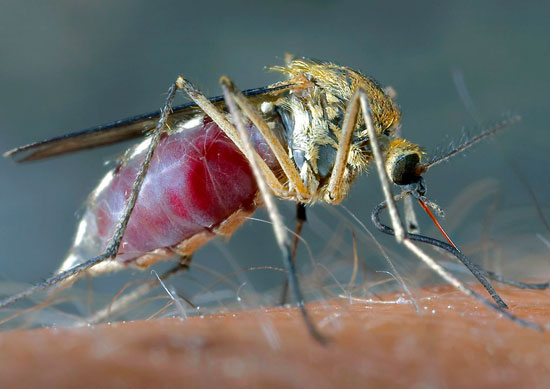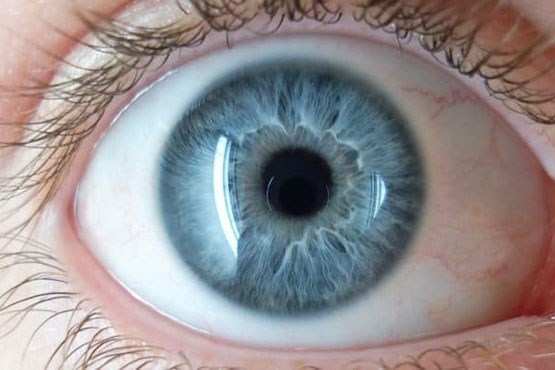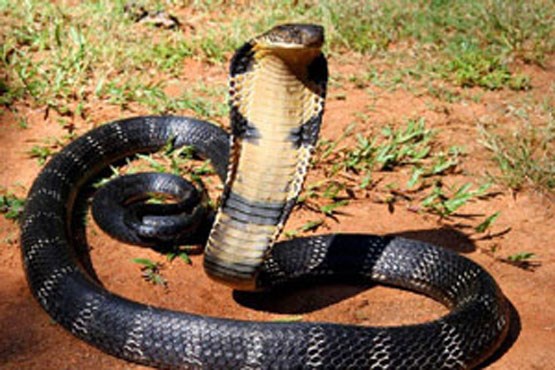15 Amazing Facts About Babies
That Show How Wonderful Is Nature’s Own Science
Babies represent the circle of life. Their fascinating skills have intrigued scientists who have conducted studies in trying to decipher how they operate the way they do. The biological premise that they hold is unimaginable from discerning the smell of their mother to developing under-water-survival skills. These Facts about babies compile some of the most interesting facets about the world of babies that represent the natural and biological miracle which they truly are.
1. Babies cry with an accent, making it possible to distinguish a French baby from a German baby, based purely on the way they cry.
Babies learn the accent in which their mothers talk and then try to emulate her accent while they cry. This has been observed in a study that was published in the journal Current Biology. Babies, as it is believed, start listening to the voice of their mothers while they are in womb and then try to copy that accent as they are growing up.
A team of scientists had recorded the cries of 60 newborns- 30 born into French-speaking families and 30 that heard German. And it was observed that the German babies cry in a falling melody while the French babies cry in a rising note. These notes match the respective native languages of their parents. (Source)
2. Newborn babies, when left to lie on their mother’s stomach for the first hour will crawl up and attach to their mom’s nipple without assistance. They are attracted to the nipple’s similar smell to amniotic fluid.
Newborn babies have a tendency to crawl up to their mother’s areola/nipple almost instinctively when they are made to lie on their mother’s stomach. This movement is known as ‘Breast Crawl” and the reason is the attraction of babies towards the Amniotic fluid. As a fetus inside the womb, the babies are subjected to olfactory learning and get attracted to the smell of amniotic fluid.
The presence of amniotic fluid on baby’s hands also tells us why they keep sucking their hands and fingers. (Source)
3. One reason for a mother’s impulse to kiss her newborn baby: the mother ingests the bacteria/viruses on baby’s skin, then her immune cells create antibodies that go into her breast milk, thus protecting the baby from imminent infection.
One reason for mothers kissing their babies besides the obvious reason is the impulse of protecting her newborn child. How a kiss leads to this protection is that when a mother kisses her newborn, she samples the pathogens that prevail on the baby’s face and body which the baby is about to ingest.
These samples are then taken up by the mother’s lymphoid organs like the tonsils, and white blood cells called memory B cells are stimulated and then re-stimulated with each kiss. The B cells so produced then migrate to the mother’s breasts where they produce antibodies that are needed by the baby. These antibodies then travel into the baby’s system through breastfeeding. (Source)
4. Babies put anything/everything into their mouths because it’s where their most-developed nerve endings are.
Until the babies are at least 7 months old, they cannot use their hands and fingers to explore objects. However, their mouth has more nerve endings per square millimetre than any other part of their body, therefore, they have a tendency to put everything in their mouth in order to ascertain what it feels like or what it tastes like. It’s because of this reason that the things the babies grab onto head straight into their mouth. (Source)
5. Babies smile an average of 200 times a day. The average woman smiles 62 times a day and the average man only 8.
Babies are found to smile an average of 200 times a day. By this comparison, an average woman smiles only 62 times a day and an average man smiles only 8 times a day. Studies depict that a bright smile signifies a person’s health, happiness and financial security. (Source)
6. Most (95%) human babies demonstrate an innate swimming or diving reflex from birth until the age of approximately six months.
Most (95%) human babies demonstrate an intrinsic swimming or diving reflex that is known as Infant swimming from birth until they are six months of age. During this reflex, the babies’ heart rate decreases by an average of 20% and is also characterized by reduced blood circulation to the fingers and toes.
Also, during the diving reflex, oxygen is saved for the heart and lungs that slows down the beginning of hypoxic damage. Because of Infant swimming, babies are able to survive under water for short periods of time. (Source)
7. Cells from fetuses can migrate into the brains of their mothers and a son’s DNA can show up in his mother’s brain.
“A mother may always have her children on her mind,” literally! This has been proved in a study that has thrown some surprising findings. Apparently, during pregnancy, mothers and fetuses exchange cells that can survive in each other’s bodies for years. This phenomenon is known as microchimerism. Due to this phenomenon, the brain regions in mothers often shows the male Y chromosomes.
How is this possible is that during pregnancy, the defense system of the brain- called blood-brain barrier- that prevents drugs and germs in the blood stream to pass into the brain region becomes permeable, which results in the migration of fetus cells in the brain of the mothers. (Source)
8. The palmar grasp reflex: when something touches a baby’s palm, they reflexively grasp it with surprising strength. It might be actually strong enough to support their own body weight!
Babies have an innate reflex mechanism through which they grasp a thing that touches their palm region. This reflex is known as Palmar grasp reflex. It is observed 16 months after conception and is fully developed in a baby by the time of its birth. When something strokes the palmar surface of the hand of a baby, their fingers flex towards the palm in an attempt to clasp the object that is the reason for the sensation.
The grip is surprisingly strong enough to support the baby’s own weight but is also unpredictable as an infant can release the grip unexpectedly. The Palmar grasp reflex is vital for developing fine motor skills in babies and the ability to recognize an object by its sensation. (1, 2)
9. A baby’s brain can use up to 50% of the total glucose supply, which may help explain why babies need so much sleep.
A baby’s brain can use as much as 50% of the total glucose supply which is why babies tend to sleep more often. By this comparison, an adult’s brain consumes 20% of the body’s supply of glucose and sleep improves the glucose uptake into the brain. The levels of leptin-a hormone that decreases appetite- increase during sleep. (Source)
10. Newborn infants can only see in Black and White for a few months. This is because their “binocular” vision is still getting developed
In the first three months of an infant, their eyes can only focus about eight to 12 inches from their face, and they see only black, white and gray. This is because during the first few weeks and months, both of the babies’ eyes learn to work together- which is known as binocular vision- and the newborn slowly begin to respond to movement.
As the color vision begins to develop after birth, babies see red first and they can then see the entire spectrum of colors by the time they are 3 months of age. (Source)
11. As late as 1985, doctors believed babies didn’t feel pain and conducted surgeries with no anesthesia.
Between the late 19th century to the early 20th century, doctors performed surgeries on babies without any anesthesia because they were taught that newborns do not experience any pain. This unbelievable misconception arose by misinterpreting the discoveries that were made in embryology at that time.
It was believed that infants do not remember any pain and since they did not have a conscious memory, there would be no long-term harm. Scientific studies that were conducted on animals having various brain lesions were misinterpreted into saying that any response to pain seen in babies was only spinal reflex. Also, it was believed that one could do nothing about relieving pain in babies because nobody could measure an infant’s pain. (Source)
12. Baby cages hanging out the window were used in America in the 1920s.
In 1922, Emma Read, from Washington, patented the idea of baby cages that could be suspended upon the exterior of a building from the window inside the parents room. The reason behind this then-inncuous-now-unimaginable idea was to help the parents who were raising their children in crowded cities and thus, had cramped spaces inside their homes.
The then East Poplar borough council in London proposed to fix the cages outside the high-rise buildings so that the babies could benefit from the direct sunlight and fresh air. The cages were also distributed to members of the Chelsea Baby Club who lived in high buildings and had no gardens. (Source)
13. During pregnancy, if an organ damage occurs to a mother, the fetus present inside her sends stem cells for repairing the damaged organ
Mothers who experience heart weakness during or after the pregnancy recuperate almost instantaneously. This is possible due to the fetus present inside them that donates its stem cells for repairing the damaged organ. This was confirmed in an experiment that was conducted by Hina Chaudhry of the Mount Sinai School of Medicine in New York City.
In this experiment, two lines of mice were chosen: normal mice and mice genetically engineered to express green fluorescent protein (GFP), which glows a distinctive green when exposed to blue light, in their cells. Hina and her team mated normal female mice with GFP-producing male mice. This meant that half the resulting fetuses had the GFP gene, too, making their cells glow, too.
After 12 days, the researchers gave half the pregnant mice heart attacks. As the scientists observed the female mice’s heart tissue two weeks after the heart attacks, they found glowing green tissue – cells that came from the fetus – in the mom’s heart. (1, 2)
14. Neuroscientists believe babies don’t dream for the first few years of their life.
Babies do not dream for the first few years of their lives. This was studied by psychologist David Foulkes in “Children’s Dreaming and the Development of Consciousness” (Harvard University Press, 2002). As per the study, an interesting finding is that babies spend half their sleep time in REM (rapid eye movement) sleep phase and it is in this REM phase that adults start to dream.
However, due to the limited experiences of a newborn and their brains’ immaturity, Foulkes and his team infer that infants spend most of the starting years of their lives dream-less. (Source)
15. While in the womb, the babies grow mustaches…..that they eat. The hair is called lanugo and it falls out before a baby is born and is eaten by the baby and then becomes part of its first poop.
Babies grow mustaches even if they are inside the womb. This happens when the fetus is about 5.3 inches (135 mm) long and weighs about 6 ounces (170 g). Fine hairs are developed on the upper lip and over the next month, the hair spreads all over the body. This hairy coat is called lanugo and a baby starts to shed each and every hair one by one before birth or soon after birth.
Each hair, after its being shed, is consumed by the infant and turns into a black substance called meconium which is excreted in the form of first bowel movement of the baby. (Source)
Bonus Facts:
- A human baby has over 60 more bones than an adult.
- A newborn baby has about one cup of blood in its body.
- Babies are born with no bacteria in their bodies.
- 1 in 5,000 babies is born without an anus opening.





 استاد غلامی
استاد غلامی فیلم مراسم تشییع شهید محسن حججی
فیلم مراسم تشییع شهید محسن حججی دانلود سخنرانیهای استاد معمار منتظرین در محرم 96
دانلود سخنرانیهای استاد معمار منتظرین در محرم 96 لاغری و دفع سنگ کلیه با این میوه پاییزی+ اینفوگرافی
لاغری و دفع سنگ کلیه با این میوه پاییزی+ اینفوگرافی غضروفسازی با دارو؛ خیال یا واقعیت؟
غضروفسازی با دارو؛ خیال یا واقعیت؟  اگر جزو این گروهها هستید، نمک بیشتری مصرف کنید!
اگر جزو این گروهها هستید، نمک بیشتری مصرف کنید!  تاثیرات عجیبی که ترشیجات بر بدن میگذارند!
تاثیرات عجیبی که ترشیجات بر بدن میگذارند! مساله این است: ماهی شمال یا جنوب؟
مساله این است: ماهی شمال یا جنوب؟ 10 بیماری را با مصرف این «دانههای ریز» درمان کنید!
10 بیماری را با مصرف این «دانههای ریز» درمان کنید! چرا پشهها بعضیها را بیشتر نیش میزنند؟
چرا پشهها بعضیها را بیشتر نیش میزنند؟  دست خود را چگونه مشت میکنید؟ (زبان بدن)
دست خود را چگونه مشت میکنید؟ (زبان بدن) مهمترین اختلالات جنسی در خانمها
مهمترین اختلالات جنسی در خانمها  اسامی فرآوردههای غذایی غیرمجاز، اعلام شد
اسامی فرآوردههای غذایی غیرمجاز، اعلام شد چگونه چشمان زیبا داشته باشیم؟
چگونه چشمان زیبا داشته باشیم؟  کارهایی که هنگام مارگزیدگی باید انجام داد
کارهایی که هنگام مارگزیدگی باید انجام داد  دانلود کتاب سفینه البحار و مدینه الحکم و الآثار
دانلود کتاب سفینه البحار و مدینه الحکم و الآثار آیا با قانون جذب میتوانم فرد مورد علاقهام را جذب کنم؟!
آیا با قانون جذب میتوانم فرد مورد علاقهام را جذب کنم؟! دانلود کتاب کمیاب جفر جامع با لینک مستقیم
دانلود کتاب کمیاب جفر جامع با لینک مستقیم حکایتی عجیب و پرمعنا از امام باقر علیهالسلام
حکایتی عجیب و پرمعنا از امام باقر علیهالسلام داستان مریض شدن شیر (عربی و فارسی)
داستان مریض شدن شیر (عربی و فارسی) بررسی آثار منسوب به حضرت صادق علیهالسلام
بررسی آثار منسوب به حضرت صادق علیهالسلام تمامی جوابهای بازی جدول مدرن
تمامی جوابهای بازی جدول مدرن خصم با مردم، دشمنی با خدا
خصم با مردم، دشمنی با خدا انشاء به زبان عربی با ترجمه فارسی
انشاء به زبان عربی با ترجمه فارسی  تأثیر بیان (همراه با تصاویر بدیع)
تأثیر بیان (همراه با تصاویر بدیع) 10 توصیه مهم برای بهبود روابط اجتماعی
10 توصیه مهم برای بهبود روابط اجتماعی پوشیدن لباس رسمی موقع نماز
پوشیدن لباس رسمی موقع نماز مذمّت مخاصمه
مذمّت مخاصمه 17_ کلید فتح قلوب؟!
17_ کلید فتح قلوب؟! این پروتئین، فرمانده 2.5 میلیارد، ضربان قلب
این پروتئین، فرمانده 2.5 میلیارد، ضربان قلب